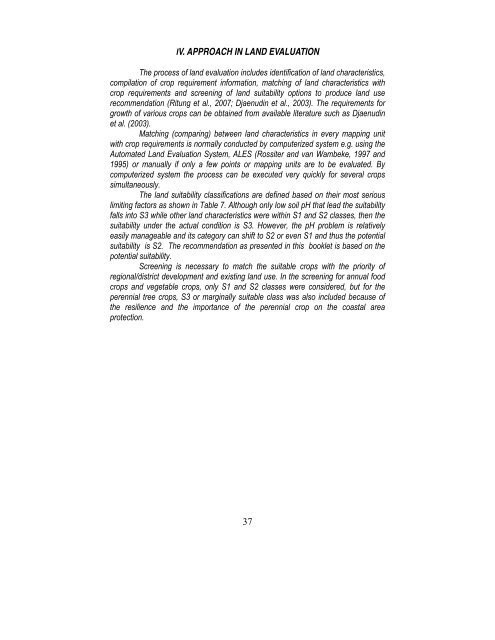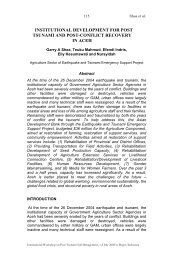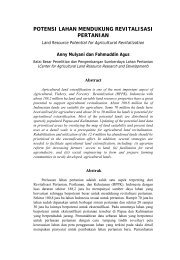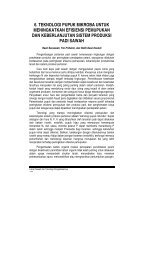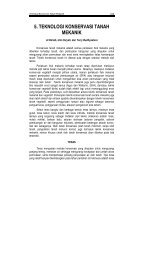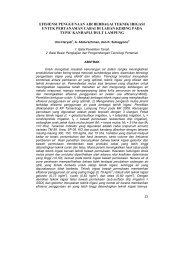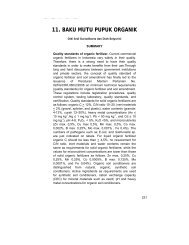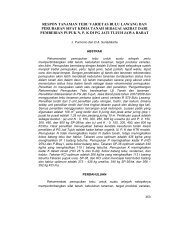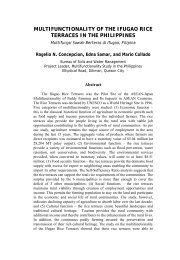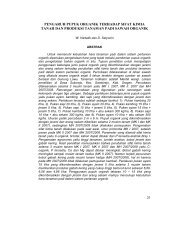booklet aceh barat.pdf - Balai Penelitian Tanah
booklet aceh barat.pdf - Balai Penelitian Tanah
booklet aceh barat.pdf - Balai Penelitian Tanah
Create successful ePaper yourself
Turn your PDF publications into a flip-book with our unique Google optimized e-Paper software.
IV. APPROACH IN LAND EVALUATION<br />
The process of land evaluation includes identification of land characteristics,<br />
compilation of crop requirement information, matching of land characteristics with<br />
crop requirements and screening of land suitability options to produce land use<br />
recommendation (Ritung et al., 2007; Djaenudin et al., 2003). The requirements for<br />
growth of various crops can be obtained from available literature such as Djaenudin<br />
et al. (2003).<br />
Matching (comparing) between land characteristics in every mapping unit<br />
with crop requirements is normally conducted by computerized system e.g. using the<br />
Automated Land Evaluation System, ALES (Rossiter and van Wambeke, 1997 and<br />
1995) or manually if only a few points or mapping units are to be evaluated. By<br />
computerized system the process can be executed very quickly for several crops<br />
simultaneously.<br />
The land suitability classifications are defined based on their most serious<br />
limiting factors as shown in Table 7. Although only low soil pH that lead the suitability<br />
falls into S3 while other land characteristics were within S1 and S2 classes, then the<br />
suitability under the actual condition is S3. However, the pH problem is relatively<br />
easily manageable and its category can shift to S2 or even S1 and thus the potential<br />
suitability is S2. The recommendation as presented in this <strong>booklet</strong> is based on the<br />
potential suitability.<br />
Screening is necessary to match the suitable crops with the priority of<br />
regional/district development and existing land use. In the screening for annual food<br />
crops and vegetable crops, only S1 and S2 classes were considered, but for the<br />
perennial tree crops, S3 or marginally suitable class was also included because of<br />
the resilience and the importance of the perennial crop on the coastal area<br />
protection.<br />
37


